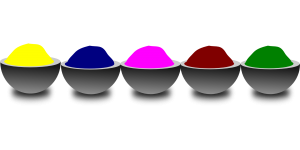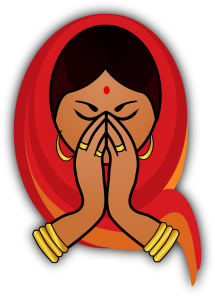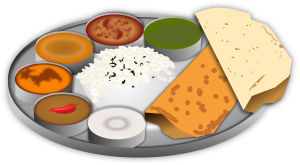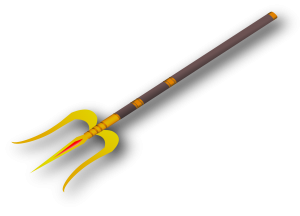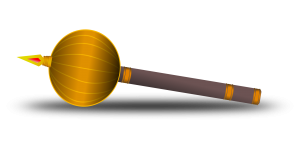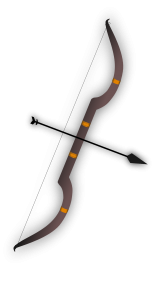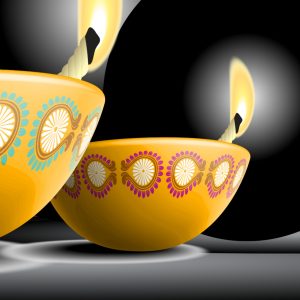
Rāma-tulasī dāsa: Is Ekādaśī-devī Śrīmatī Rādhikā?
Śrīla Bhaktivedānta Nārāyaṇa Mahārāja: Ekādaśī is not Rādhikā, but she may be considered a manifestation of Rādhikā. Kṛṣṇa has personally become Ekādaśī. Since Ekādaśī and Kṛṣṇa are the same, and Rādhā and Kṛṣṇa are the same, it can be said that Ekādaśī is a manifestation of Rādhikā.
Śrīmatī Rādhikā, who is the personification of hlādinī-śakti (Kṛṣṇa’s supreme pleasure potency), is more than Ekādaśī. In Goloka Vṛndāvana there is no observance of Ekādaśī. Ekādaśī is only for those practicing sādhana (devotional practices) in this material world.
(One might argue that Nanda Mahārāja followed Ekādaśī, and he is a resident of Goloka Vṛndāvana. Actually, Nanda Mahārāja follows Ekādaśī only in prakaṭa Vṛndāvana, Vṛndāvana as it is manifested in this world, which is sādhana-bhūmī, the world of devotional practice. And he did so only for the purpose of teaching others. ―Śrīpāda Mādhava Mahārāja)
There, in Goloka Vṛndāvana, Śrīmatī Rādhikā is the supreme power of Kṛṣṇa, so there are differences between Her and Ekādaśī.
Rāma-tulasī dāsa: There is a story that when Kṛṣṇa was sleeping in a cave, the Mura demon came to kill Him. At that time, a śakti (power) came out from Kṛṣṇa’s body in the form of a devī (goddess) with many arms and killed that demon.
Śrīla Bhaktivedānta Nārāyaṇa Mahārāja: I think you are referring to Śrīmad-Bhāgavatam’s narration of the demon Kālayavana. When Kālayavana was chasing Kṛṣṇa, Kṛṣṇa entered a cave where Mahārāja Mucukunda was sleeping.
Mucukunda had previously gone to heaven to fight against the demons on behalf of the demigods. After he had helped the demigods win the battle, their commander-in-chief, Kārtikeya, told him, “We want to give you a benediction, so please ask for one.”
Mucukunda said, “I am very tired. I want to sleep, and I want the benediction that anyone who awakens me will at once be burned to ashes.” He received that benediction by the blessing of Kārtikeya.
Kālayavana also had a benediction that he would not be killed by anyone in the Yadu dynasty, and Kṛṣṇa knew this fact. As He was being chased by Kālayavana, Kṛṣṇa saw Mucukunda sleeping in the cave, so He hid Himself there. Following Kṛṣṇa, Kālayavana entered the cave and, thinking Mucukunda to be Kṛṣṇa, said to him, “Now You are sleeping? Do not think I will let You go.” He kicked Mucukunda, who awoke, looked towards him, and thus burned him to ashes. No śakti came out from Kṛṣṇa’s body.
Rama-tulasi dāsa: There is a book about Ekādaśī that was written by Kṛṣṇa-Balarāma Svāmī. In that book there is a description of a manifestation of that devī. It states that when Kṛṣṇa woke up, He saw her with multiple hands.
Śrīla Bhaktivedānta Nārāyaṇa Mahārāja: That book is not authentic. Kṛṣṇa-Balarāma Svāmī does not follow his own guru, Śrīla Bhaktivedānta Svāmī Mahārāja. He thinks, “I was born as a brāhmaṇa and my gurudeva was not; so I am greater than him.” He came to me, but I refused to meet with him. I told him, “You don’t have any faith in your gurudeva or guru-paramparā. Śrīla Raghunātha dāsa Gosvāmī was not born in a brāhmaṇa family, but he is equal to Śrīla Rūpa Gosvāmī, Śrīla Sanātana Gosvāmī, Śrīla Raghunātha Bhaṭṭa Gosvāmī, Śrīla Jīva Gosvāmī, and Śrīla Gopala Bhaṭṭa Gosvāmī. Śrīla Narottama dāsa Ṭhākura was not a brāhmaṇa by birth, but he was more qualified than any brāhmaṇa.” Kṛṣṇa-Balarāma Svāmī’s thoughts are very bad. It is best not to read his book.
Śrīpāda Padmanābha Mahārāja: In that Ekadāśī book he collected many stories from different Purāṇas for each Ekadāśī.
Śrīla Bhaktivedānta Nārāyaṇa Mahārāja: We also have a collection of such histories, but not in English. Ours is in Bengali, but we can translate it into English. That translation will be authoritative.

